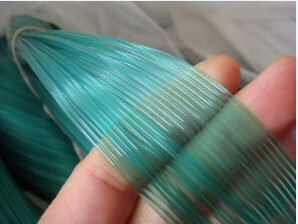Monofilament fishing line is a staple in the fishing world, widely appreciated for its versatility and affordability. Whether you’re a beginner or an experienced angler, monofilament (or mono) has a place in your tackle box. Understanding the characteristics, strengths, and weaknesses of this line can help you make the most of your time on the water. Here’s what every angler should know about monofilament fishing lines, and how they fit into current fishing trends.
What Is Monofilament?
Monofilament line is made from a single strand of nylon or similar material, resulting in a smooth, flexible fishing line. It’s known for being easy to work with, which makes it ideal for beginners and seasoned anglers alike. Available in a range of strengths (or “pound test”), monofilament can be used to target a variety of fish species.

Key Benefits of Monofilament
1. Stretch and Forgiveness
One of the defining features of monofilament is its stretch. Unlike braided lines, mono stretches under tension, making it forgiving during fights with fish that make sudden runs or jumps. This is especially useful when targeting fish with softer mouths, like trout or crappie, as it prevents the hook from pulling out.
2. Affordability
Monofilament is one of the most affordable types of fishing lines, making it accessible to anglers at all experience levels. Whether filling up a reel for a weekend trip or spooling multiple rods, mono offers a cost-effective solution without compromising on performance.
3. Versatility
Monofilament works well across a variety of fishing styles, from freshwater to saltwater. Its neutral buoyancy makes it ideal for topwater fishing as well as trolling or casting. It can be used with virtually any bait or lure, making it a popular choice for those who like to mix up their techniques.
Seasonal Considerations and Popular Trends
Monofilament lines are most effective during warmer months, particularly in spring and summer when fish are more active. This is because the stretch in mono can be a disadvantage in colder water, where fish tend to bite more subtly. During the summer, anglers often use mono when targeting bass with topwater lures or when trolling for species like walleye or pike.
Common Uses for Monofilament
1. Freshwater Fishing
Monofilament is often used when targeting species like bass, trout, and panfish. Its stretch and versatility make it perfect for beginners learning to fish in lakes or rivers. Mono also performs well when paired with crankbaits or spinnerbaits, as it allows the bait to move more naturally through the water.
2. Saltwater Fishing
While braided line is often preferred for heavier saltwater species, monofilament has its place, especially when surfcasting or fishing for smaller inshore species like redfish and flounder. The line’s stretch helps absorb the shock from sudden strikes, and its durability holds up well against abrasion from sand and rocks.
Monofilament Line Maintenance
To get the most out of monofilament, proper maintenance is key. Mono tends to degrade over time, especially when exposed to UV light. Be sure to store reels in a cool, dark place when not in use, and change out the line every season to avoid breakage.
Things to Consider
- Diameter: Monofilament has a thicker diameter compared to braided line, which means it may limit casting distance on light setups. However, the thicker line is less prone to tangling and is easier to handle for beginners.
- Memory: Mono has a tendency to hold its shape, so anglers may notice more line twist or loops after extended use. Stretching the line before fishing can help alleviate this issue.
Monofilament fishing line remains a popular choice due to its versatility, affordability, and ease of use. Understanding how and when to use it can make a big difference in landing more fish and having a successful day on the water.
Image: n1outdoors





